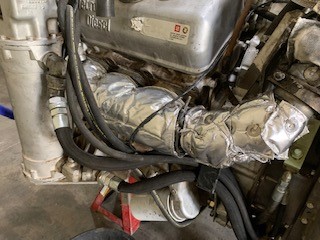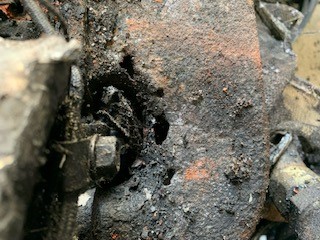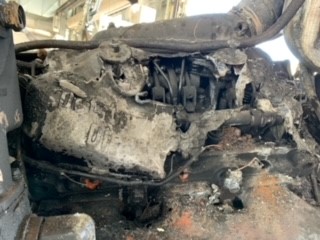BLUF: Damaged exhaust manifolds and heat shield covers can cause engine fires
.

Photo by Spc. Michael McDevitt
Recent incidents of M113A3-series vehicles catching fire illustrate why you should regularly inspect the exhaust manifold and the heat shield covers.
 Exhaust manifold heat shield cover
Exhaust manifold heat shield cover
The exhaust covers tend to retain water from rain and vehicle washing. Rust develops over time between the exhaust manifold and its covers. The rust eventually creates pits and holes on the manifold, greatly increasing the risk of fire. Also the manifold covers themselves can break down from the inside out allowing exhaust gases and flames to enter the engine compartment.
 Moisture can damage exhaust manifolds
Moisture can damage exhaust manifolds
 Fire-damaged M113-FOV engine
Fire-damaged M113-FOV engine
Exhaust manifolds should be inspected for rust during semiannual services like it says in TM 9-2815-205-23&P (Aug 22). If you find any damaged exhaust manifolds, order the new High Temperature Insulation (HTI) coated version, NSN 4730-01-492-5996. If it isn’t available, you can still order the original version manifold, NSN: 2815-00-567-2502, and the exhaust cover, NSN 2990-01-291-1276.
 Heat shield cover damage caused by moisture
Heat shield cover damage caused by moisture
A good way to prevent moisture build up in the first place is to keep the engine grille buttoned up with grille cover, NSN 5120-01-105-0779 (green) or NSN 2510-01-496-9646 (tan). Just don’t forget to remove the grille cover before operating the vehicle.
Covering the vehicle with a tarp whenever it’s stored outdoors is another good idea. A 12x17-ft green tarp comes with NSN 8340-00-841-6456. Or get a 12x17-ft tan tarp with NSN 2540-01-330-8062.
And remember, don’t spray water directly onto the engine during wash rack operations. If the exhaust covers do get wet, dry them out by running the engine at fast idle until moisture is no longer present.